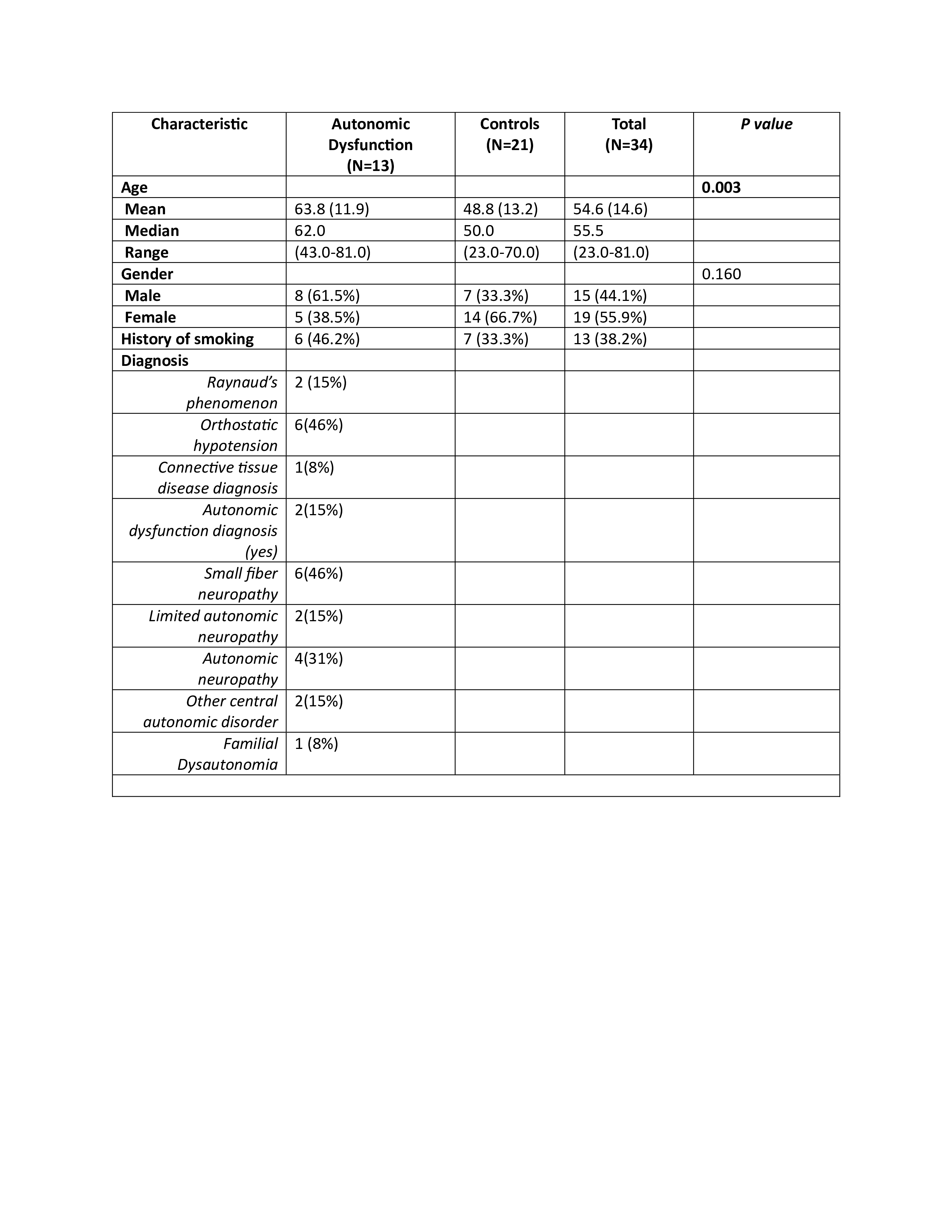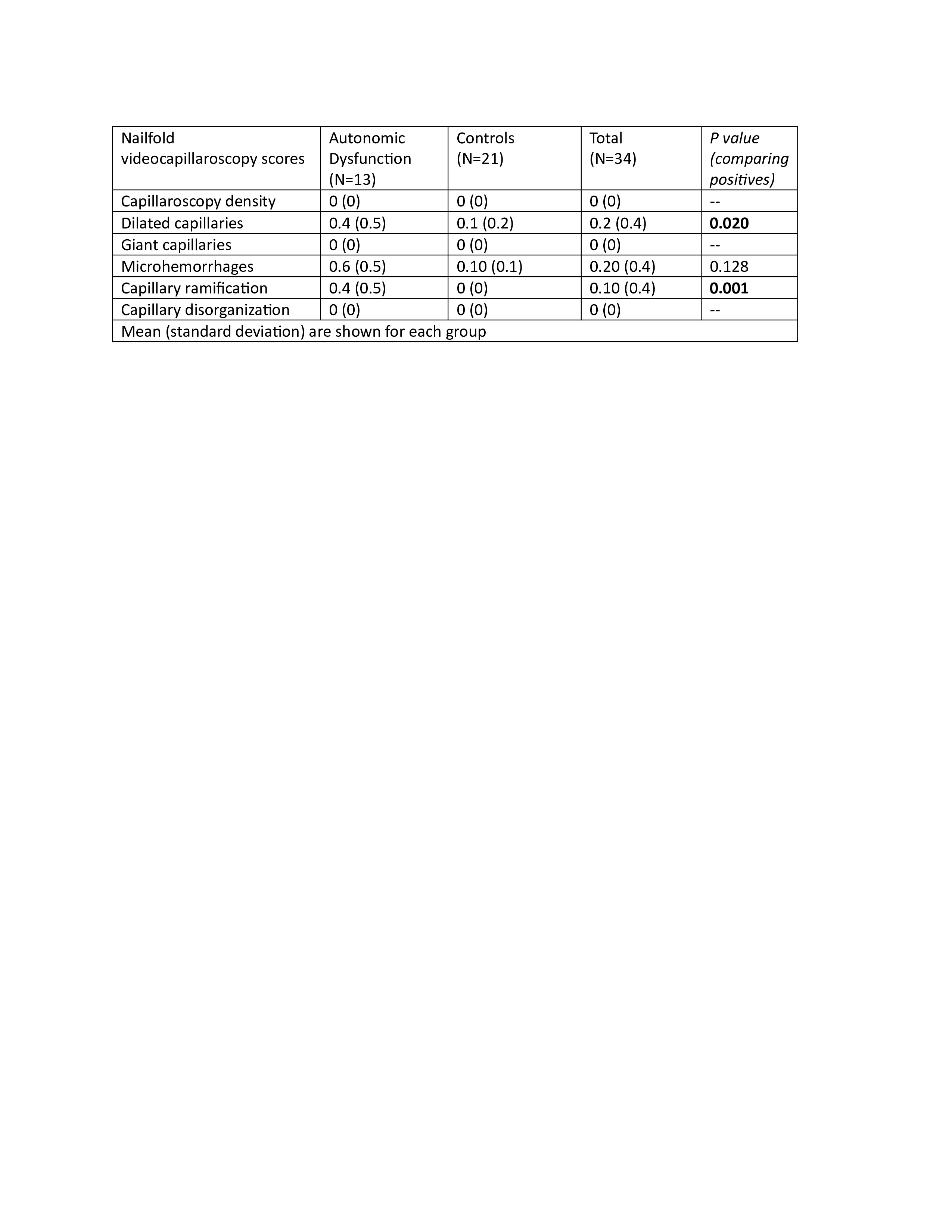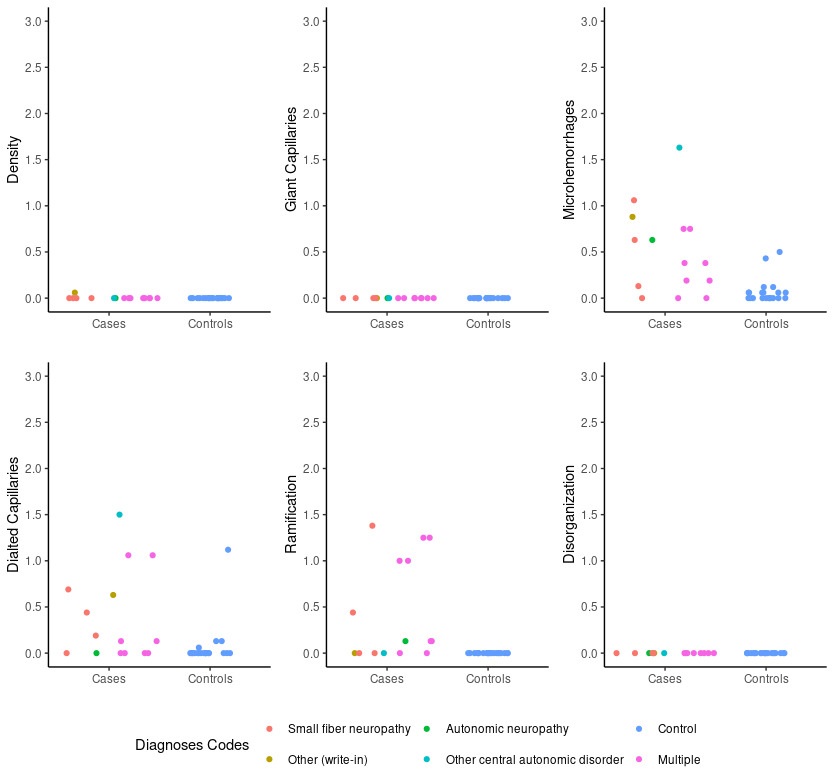Session Information
Session Type: Poster Session A
Session Time: 10:30AM-12:30PM
Background/Purpose: Dysfunction of the autonomic system affects multiple target organs and is linked to microvascular impairment and abnormal vasoreactivity. Given its variable manifestations, diagnosis is challenging and requires extensive and time-consuming autonomic testing including Valsalva, sweat test and reflex screen with subjective findings. We aim to utilize nailfold videocapillaroscopy to assess evidence of microvascular damage and capillary bed architecture change to correlate with presence of autonomic dysfunction.
Methods: Patients with autonomic nervous system dysfunction were recruited from rheumatology and neurology clinic and were invited for voluntary NVC procedure at the time of enrollment. 1:1.5 comparison with normal controls was done. Additional information recorded includes demographics, diagnosis of type of autonomic dysfunction with autonomic testing results including but not limited to reflex screen, sweat test, Valsalva maneuver, nerve fiber density, electromyography (EMG), serology, history of autoimmune disease. NVC was performed on a total of 13 patients and capillary morphology, density, organization, microhemorrhages, and ramifications were recorded. The study was approved by the Mayo Clinic Institutional Review Board and received funding from the STARDOM Mayo Clinic internal grant.
Results: Table 1 shows baseline characteristics with mean age 64 years in patients with autonomic dysfunction and 49 in the control group. There were 8 (61%) and 7 (33%) males in the autonomic dysfunction group and controls respectively. There was a higher proportion of prior smokers in the autonomic dysfunction group. Autonomic dysfunction group consisted of small fiber neuropathy 6 (46%), orthostatic hypotension 6 (46%), autonomic neuropathy 4 (31%), limited autonomic neuropathy 2 (15%) amongst other types. There were no differences in capillary density, giant capillaries ( >50 microns in diameter) and disorganization between the two groups (Table 2). Patients with autonomic dysfunction were noted to have more dilated capillaries ( >20 but < 50 microns) and ramifications with statistical significance. Both groups had high microhemorrhage scores though more frequent in autonomic dysfunction.
Conclusion: Autonomic dysfunction was associated with microvascular abnormalities including significantly increased enlarged capillaries and ramifications as compared to healthy controls. No significant difference in capillary density, giant capillaries and architectural disorganization was noted. We demonstrate diagnostic potential of NVC in autonomic dysfunction and advocate for further study of microvascular structure in autonomic dysfunction.
To cite this abstract in AMA style:
Mumtaz S, Arca K, Majithia V, Hodge D, Cheshire W, Berianu F. Microvascular Abnormalities Are Present in Autonomic Dysfunction: Results of a Prospective Study [abstract]. Arthritis Rheumatol. 2024; 76 (suppl 9). https://acrabstracts.org/abstract/microvascular-abnormalities-are-present-in-autonomic-dysfunction-results-of-a-prospective-study/. Accessed .« Back to ACR Convergence 2024
ACR Meeting Abstracts - https://acrabstracts.org/abstract/microvascular-abnormalities-are-present-in-autonomic-dysfunction-results-of-a-prospective-study/



